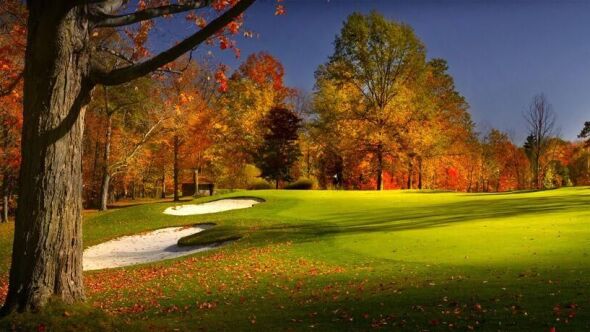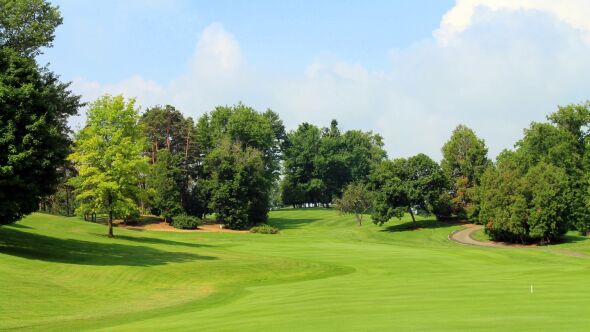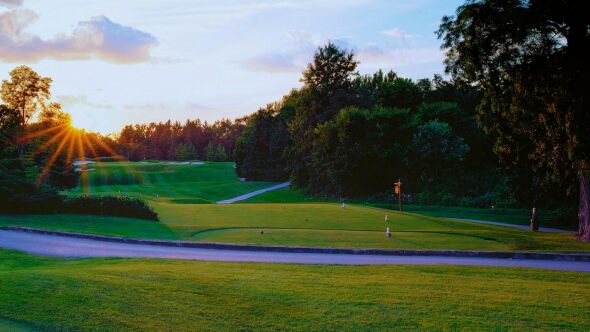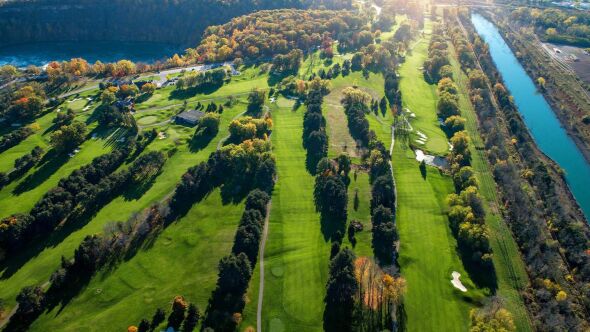- Born
- Sep 18, 1893
- In
- Toronto, Ontario
- Died
- Jan 04, 1953
About
Stanley Thompson served with the Canadian forces in WWI, after which he toured golf courses in the British Isles. When he returned to Canada, he began his career as a course architect. After a several-year collaboration with George Cumming, Thompson founded his own firm in 1923. By the time of his death in 1953, he had designed some 180 courses from coast to coast in Canada, the U.S., South America and the Caribbean. His influence on golf course architecture in the Americas is profound, and his courses remain some of the best examples of Golden Age course design.
Thompson was a strong proponent of the "minimalist" or "natural" design philosophy. "Nature must always be the architect's model," he wrote in 1923.
He also stressed the importance of balancing challenge and playability: "The most successful course is one that will test the skill of the most advanced golfer without discouraging the duffer while adding to the enjoyment of both."
He even advocated designing courses for the 85 percent of golfers who "play 90 or over," rather than the ones who "play in the 70 class," as it is the former, rather than the latter, who mostly pay the bills to support clubs.
Consistent with this philosophy, Thompson rarely laid out any course over 6,500 yards, which, even with modern equipment, is a reasonable length for 90s shooters today.
Thompson was known as "The Toronto Terror," and a comprehensive account of his colorful character and influential work can be found in James A. Barclay's 2000 biography "The Toronto Terror, The Life and Works of Stanley Thompson, Golf Course Architect" (Sleeping Bear Press).
Notable Thompson designs include Jasper Park Lodge Golf Club and Banff Springs Golf Course in Alberta, St. George's Golf and Country Club in Ontario, Fundy National Golf Course in New Brunswick, and Sleepy Hollow Golf Club in Brecksville, Ohio).
Aside from the courses themselves, Thompson's major influence on golf course architecture lies in the apprentices he trained, most notably Robert Trent Jones, Sr. Other members of his team throughout the decades who went on to successful solo careers include Clinton "Robbie" Robinson, Geoffrey Cornish, Howard Watson, Kenneth Welton, Norman Woods, and Robert Moote. In 1948, Thompson co-founded the American Society for Golf Course Architects with the legendary Donald Ross.
Few golf course architects demand as much respect and admiration as Stanley Thompson, as evidenced by the creation of The Stanley Thompson Society, which is devoted to the research, documentation, and preservation of his work. Thompson was inducted posthumously into the Canadian Golf Hall of Fame in 1980.
Thompson was a strong proponent of the "minimalist" or "natural" design philosophy. "Nature must always be the architect's model," he wrote in 1923.
He also stressed the importance of balancing challenge and playability: "The most successful course is one that will test the skill of the most advanced golfer without discouraging the duffer while adding to the enjoyment of both."
He even advocated designing courses for the 85 percent of golfers who "play 90 or over," rather than the ones who "play in the 70 class," as it is the former, rather than the latter, who mostly pay the bills to support clubs.
Consistent with this philosophy, Thompson rarely laid out any course over 6,500 yards, which, even with modern equipment, is a reasonable length for 90s shooters today.
Thompson was known as "The Toronto Terror," and a comprehensive account of his colorful character and influential work can be found in James A. Barclay's 2000 biography "The Toronto Terror, The Life and Works of Stanley Thompson, Golf Course Architect" (Sleeping Bear Press).
Notable Thompson designs include Jasper Park Lodge Golf Club and Banff Springs Golf Course in Alberta, St. George's Golf and Country Club in Ontario, Fundy National Golf Course in New Brunswick, and Sleepy Hollow Golf Club in Brecksville, Ohio).
Aside from the courses themselves, Thompson's major influence on golf course architecture lies in the apprentices he trained, most notably Robert Trent Jones, Sr. Other members of his team throughout the decades who went on to successful solo careers include Clinton "Robbie" Robinson, Geoffrey Cornish, Howard Watson, Kenneth Welton, Norman Woods, and Robert Moote. In 1948, Thompson co-founded the American Society for Golf Course Architects with the legendary Donald Ross.
Few golf course architects demand as much respect and admiration as Stanley Thompson, as evidenced by the creation of The Stanley Thompson Society, which is devoted to the research, documentation, and preservation of his work. Thompson was inducted posthumously into the Canadian Golf Hall of Fame in 1980.
Stanley Thompson Designed Courses Map
Stanley Thompson Designed Courses
-
-
-
-
-
-
-
-
-
-
-
-
-
-
-
-
-
-
-
-
-
-
-
-
-
-
-
-
-
-
-
-
-
-
-
-
-
-
-
Banff, AlbertaPublic
-
-
-
-
-
-
Geneva-on-the-Lake, OhioPublic/Municipal
-
-
-
-
-
-
-
-
-
-
-
-
-
-
-
-
-
-
-
-
-
-
-
-
-
-
-
-
-
-
-
-
-
-
-
-
-
-
-
-
-
-
-
-
-
-
-
-
-
-
-
-
-
-
-
-
-
-
-
-
-
-
-
-
-
Ingonish Beach, Nova ScotiaPublic/Resort
-
-
-
-
-
-
-
-
-
-
-
-
-
-
-


































































































































